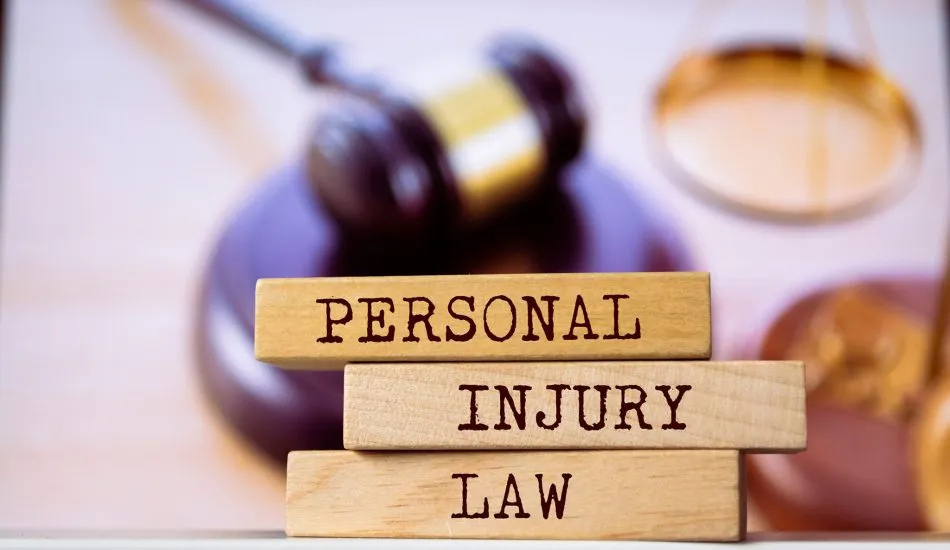|
|
Last Modified on Dec 09, 2024
Life can change in an instant if you or a loved one is injured in an accident. Not only are you navigating the challenges of recovery, but there are many other legal aspects to this process that also need to be handled. Most people don’t understand the legal system, which is why finding a personal injury lawyer is essential. In this article, we are sharing a quick personal injury lawsuit guide to help you get started with your case and find legal representation.
It’s important to remember that you have legal options and rights when an accident occurs. There are possible solutions to help you recover financial compensation to help with the losses you are incurring. But you also need to understand the challenges you will be navigating. It can be complicated to file your claim and work through the negotiations to receive a fair settlement.
Keep in mind that this personal injury lawsuit guide is just an overview. Our goal is to give you a basic understanding of the topic. But online information can never replace the customized advice you can receive from an experienced attorney.
Different Types of Personal Injury Lawsuits
When a personal injury lawsuit is being filed, it means that an accident occurred. The injured person is bringing civil action against another party that was at-fault for the accident. Through this process, it’s necessary to determine fault in personal injury lawsuit so that financial compensation can be recovered from the responsible party.
There are many reasons why a person might be injured due to the negligence or actions of another person or entity. Examples of different types of personal injury lawsuits include:
- Car accidents
- Motorcycle accidents
- Truck accidents
- Slip and fall accidents
- Dog bites
- Workers’ compensation
- Medical malpractice
- Wrongful death
- Product issues
- Defamation
A personal injury lawsuit can be filed against the person at fault. For example, if you were in a car accident and another driver made a mistake on the road that caused the accident, then the lawsuit would be filed against that driver.
On the other hand, a personal injury lawsuit can also be filed against an entity. An example of this situation is if a malfunction occurs with your car and you can prove that it was the manufacturer’s fault, then the lawsuit can be filed against the company that made the car.
After the Accident: Personal Injury Lawsuit Steps to Take
Talk to an experienced attorney about how to win a personal injury lawsuit, and they will recommend that you follow specific steps after the accident occurs.
- Medical Attention is Priority: The first priority after the accident is to receive medical attention for the injuries. Even if it seems minor, you still need medical documentation. It’s best to go to the doctor without delay. For serious injuries, it might mean that you go to the emergency room or you are treated on the accident scene by emergency responders. Also, it’s common to have follow-up appointments with doctors and specialists.
- Document the Accident: Some of the best evidence you can collect to build your case is through photos and videos of the accident scene. If you are not too injured and you are able to take photos, then do it as soon as possible. If you are unable to take these photos and videos due to your injuries, then you might ask someone else to help. Make sure to gather any relevant information about the equipment, vehicles, and people involved.
- Keep a File of Evidence: In the coming weeks and months, you will continue receiving additional evidence and documentation that needs to be kept. Request copies of your medical files so this information can be used to build your case. Keep copies of the medical bills that are coming through. Any communication that you have with the insurance provider should also go into your evidence file.
- Track the Effects: How much are the injuries impacting your quality of life? Consider keeping a journal to write down details of your day-to-day life, including activities that you could/couldn’t participate in, pain levels, symptoms, and your ongoing mental state as a result of these injuries.
What to Expect: Personal Injury Lawsuit Timeline 2024
It makes sense that accident victims want to wrap up their cases as quickly as possible. But remember that negotiating a personal injury settlement takes time. It’s unreasonable to think that you will be able to close the case in a few days or even a few weeks. In fact, if the insurance provider offers a fast settlement offer, then it should be a red flag: there is a high likelihood that this settlement is a low-ball offer, which means you are missing out on compensation if you don’t negotiate a better deal.
One of the most common personal injury lawsuit mistakes is to settle too quickly. The insurance company’s goal is to close the case as quickly as possible, and pay as little as possible. So, you deserve to have an experienced attorney who will advocate for your rights and ensure that you are getting fair compensation for your injuries.
It takes time to gather the personal injury lawsuit evidence needed and negotiate the terms of the agreement. If the lawsuit goes to court, then the process will take even longer. Most victims should expect this process to require at least a few months, or even a year or two in some cases. The more severe and complicated your personal injury is, the longer it will take to close the case and receive your fair settlement.
Hire the Best Personal Injury Lawyers Near Me
You deserve an experienced team to help you navigate this challenging situation. For more information beyond this personal injury lawsuit guide, we invite you to reach out to our professional team to schedule a consultation and learn about available legal services.
At Gainsburgh, Benjamin, David, Meunier & Warshauer, L.L.C., we have many years of experience defending personal injury victims. Our goal is to advocate for your needs and help you get the compensation that you deserve. Reach out at your convenience to schedule a consultation: (504) 522-2304.





